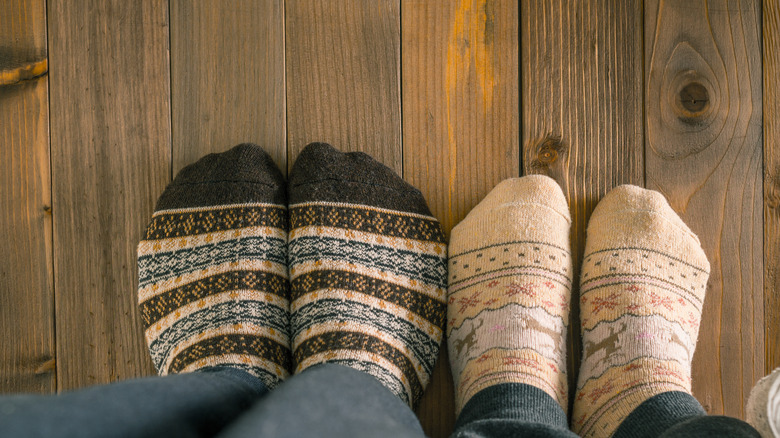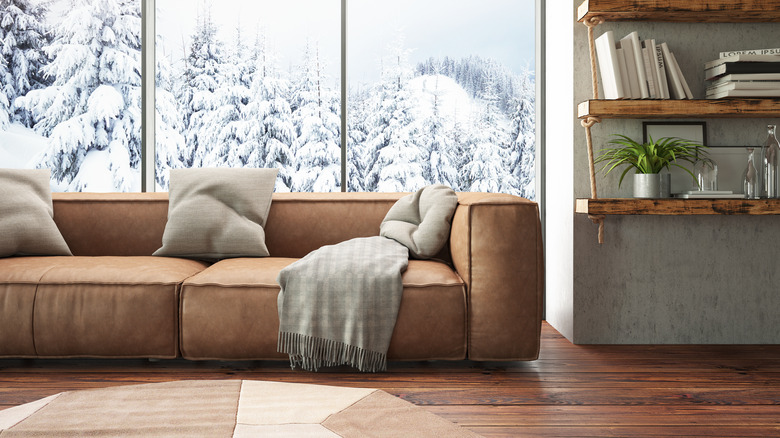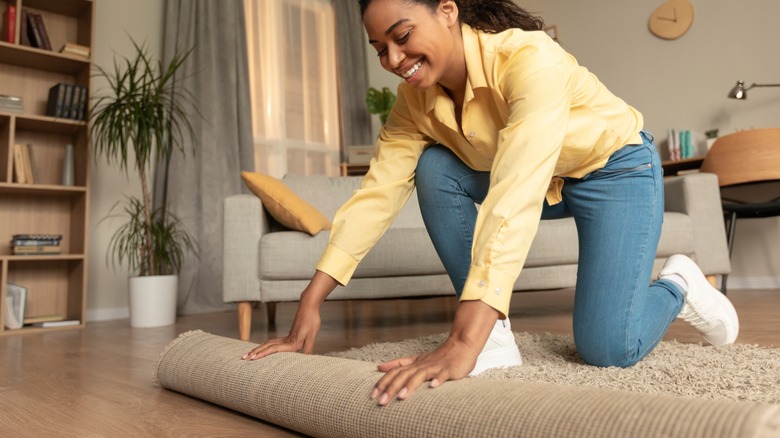How To Keep Your Hardwood Floors Warmer During Frigid Cold Winters
Cold hardwood floors can be a chilly reality, especially during the winter months. There is nothing worse than getting out of your cozy bed and placing your feet onto an icy floor. Whether your residence boasts hardwood or engineered hardwood flooring, you may experience this uncomfortable feeling. Although they're timeless and elegant flooring options, hardwood floors can still be cool in the wintertime, despite wood's high thermal mass (which explains why hardwood holds heat longer than carpet). Still, there are several common culprits behind cold wood floors, including poor insulation, gaps in the flooring, old glass windows, and more.
Luckily, there are effective strategies to warm up your hardwood floors and reclaim the comfort that makes a house truly feel like home. We'll help you figure out what is making your floors cold and provide a variety of solutions, ranging from professional floor repair to the addition of stylish area rugs.
Take care of cracks and drafts
When it comes to hardwood floors, cracks and gaps can happen over time. That's because their seals can wear down, and as wood is porous, it's prone to contracting and expanding with changing weather. During humid, warmer months, the wood expands, and usually, the gaps fill themselves back in. It's in winter that wood can contract and the gaps become bigger, which is one of the reasons for cold wood floors. If the gaps are fairly minor, you can try using a bit of wood putty to fill in the cracks — but be warned that when the weather warms again, the putty may be pushed out. Larger gaps will need the expertise and skill of a professional in most cases.
Other structural issues may be causing your floors to be extra cold, and it isn't always the floor's fault! You may have drafty areas you need to address. Windows made with old, uninsulated glass, ill-fitting doors, and fireplace chimneys can all let cold air into the house. To check for drafts easily, put your hand out toward the window, door, or chimney. If it feels noticeably colder, you likely have a draft. Installing insulated glass windows, refitting your doors, and ensuring that your fireplace is completely sealed from the chimney should cut down on drafty air.
Insulate, insulate, insulate
Sometimes, even with all the gaps and drafts addressed, hardwood floors can still feel punishingly cold in the winter. Luckily, there are a few solutions, and even better, they're a great opportunity for design and decorative details. Perhaps the best and most obvious is to invest in area rugs. Rugs work well because they provide a layer between your feet and the wood floor. Plus, if you can't have your floors professionally done for now, rugs make for an affordable, temporary fix. And you can put them wherever you need the most protection on the floors, like near large windows or drafty doors, offering tons of placement flexibility. You can even swap rugs out with the seasons, using thicker rugs in the winter months and thinner ones in the summer.
Curtains are also excellent insulators and can help your hardwood floors stay warmer. While airy linen curtains are perfectly lovely when it's warm, try to use a heavier, thicker material in the winter. Wool, chenille, cotton, and velvet are all great choices for this task. If new curtains aren't in the budget, consider using flannel fabric to add an insulation panel to your current set.


